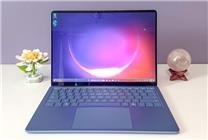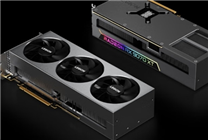The Rise of Onboard Memory in Thin and Light Laptops: Advantages and Insights
Summary:
- Onboard memory enhances the design and performance of thin and light laptops.
- Higher frequencies and lower latency improve system responsiveness, particularly for integrated graphics.
- Choosing models with 24GB or 32GB of onboard memory is recommended for future-proofing.
In the ever-evolving laptop market, onboard memory has transitioned from a perceived disadvantage to a valuable asset, particularly in thin and light notebooks. A few years ago, many consumers viewed onboard memory as a drawback. Today, however, it has become standard and even sought after, marking a significant shift in design and functionality.
The Advantages of Onboard Memory
1. Enhanced Design Flexibility
One of the primary advantages of onboard memory is its contribution to a thinner, sleeker design. Traditional replaceable memory slots add thickness, requiring careful consideration during the design process. By integrating memory directly onto the motherboard, manufacturers can minimize the overall thickness of the device. This compactness grants more space for other essential components, such as larger batteries and superior speakers, which ultimately enhances the user experience.
2. Superior Performance Metrics
Moreover, onboard memory often operates at higher frequencies with lower latency compared to its replaceable counterparts. For instance, while DDR5 memory is frequently found at 5600MHz in replaceable formats, onboard versions can reach frequencies of 6400MHz and beyond, even topping 8000MHz. This boost in speed translates to faster system response times, offering substantial improvements particularly for integrated graphics. As integrated graphics are commonly utilized in thin and light laptops, faster onboard memory can significantly elevate their performance, making these devices more capable for various applications, including AI computing tasks.
The Evolution of Thin and Light Notebooks
In recent years, the landscape of thin and light notebooks has shifted dramatically. Initially, manufacturers focused primarily on performance, leading to increased thickness to accommodate heat dissipation solutions like fans and heat pipes. This obsession with performance often resulted in heavier devices, with battery life becoming a secondary concern.
However, with advancements in processor technology from both Intel and AMD, there has been a move towards energy-efficient designs. These new processors maintain robust performance with reduced power consumption, allowing for more efficient heat management without compromising on portability. Consequently, users have started to shift their preferences from sheer performance metrics towards a balanced approach that includes weight, thinness, and battery life.
The Impact of AI on User Needs
The rise of artificial intelligence (AI) technology has also changed consumer expectations. Users are now more inclined to prioritize AI computing power and integrated graphic capabilities over raw performance statistics. This shift has led to a greater emphasis on the advantages offered by onboard memory. By reducing size and increasing performance, onboard memory is perfectly positioned to meet current consumer demands for portable yet powerful devices.
Recommendations for Future Purchases
As onboard memory continues to become the standard in thin and light notebooks, it’s essential for consumers to consider their future needs. Currently, most models come with 16GB of onboard memory. Given that this type of memory is non-upgradable, individuals are encouraged to opt for configurations that provide 24GB or even 32GB of memory, particularly if their future needs may require increased capacity.
Conclusion
In summary, onboard memory is redefining what consumers can expect from thin and light notebooks. With its ability to facilitate more streamlined designs and improve overall performance, it represents a smart choice for anyone in the market for a laptop. As technology continues to advance, the trend towards onboard memory will only grow stronger, making it a pivotal feature in future-proofing your device. By understanding these advantages, consumers can make informed choices that will meet their needs for both the present and the foreseeable future.






